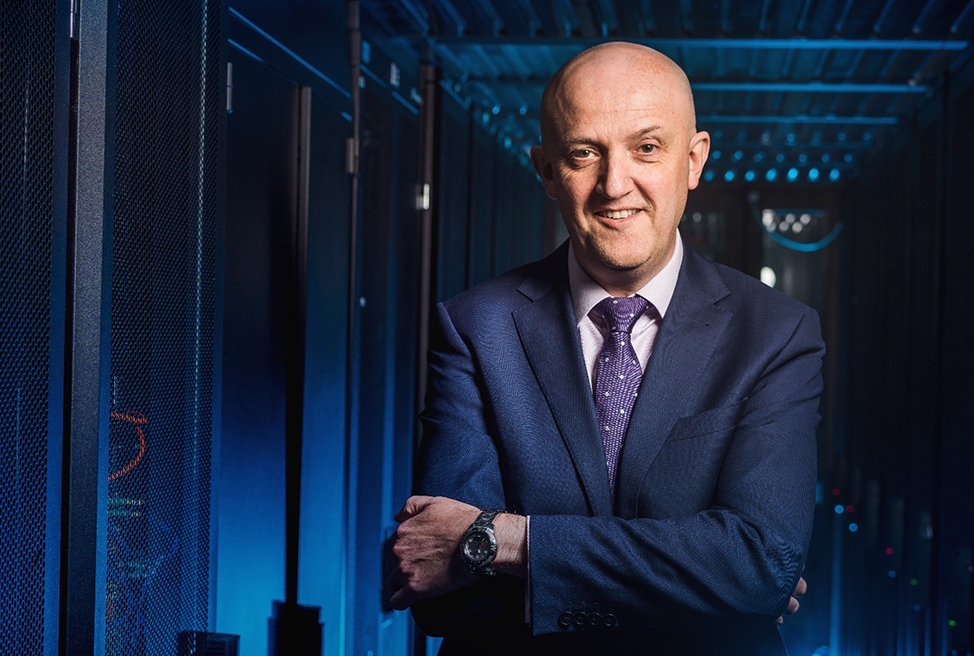31 October 2019

Mike Burgess
Director-General of ASIO
Bachelor of Engineering in Electronic Engineering
Mike Burgess has spent most of his professional life under the cover of darkness at the forefront of Australia’s security and intelligence mission.
He has been key in defending the country from global threats and the disruption, denial and degradation of our most dangerous and sophisticated adversaries.
In September, he became the Director-General of Security and Head of the Australian Security Intelligence Organisation (ASIO), following an illustrious career in technology, comprising of years leading the even more covert Australia Signals Directorate (ASD).
But with so much of his work shrouded in mystery, it is easy to fall back on the classic spy clichés and espionage tropes we are fed by Hollywood – x-ray glasses, smoking computers, and trick suitcases included. That’s why during his previous role as Director-General of ASD he made it his mission to bring the organisation out from the shadows, with a firm belief in transparency to inform and help dispel myths.
As a result, Mike recently detailed some common operations he has spearheaded giving the public a sense of how important this intelligence work is, and how often it is the difference between life and death.
“At the height of the fight against Daesh [ISIL terrorist forces], just as the Coalition Forces were preparing to attack the terrorists’ position, our ASD offensive cyber operators were at their keyboards in Australia – firing highly targeted bits and bytes into cyberspace,” he says.
“The terrorists were in disarray and driven from their position – in part because of the young men and women at their keyboards some 11,000 kilometres or so from the battle.”
Michael Burgess was born in England, before immigrating to Australia at the age of seven in 1973, just in time for the digital revolution that would transform the way we communicate, disseminate information, and even protect our shores.
Even as a self-described “geek” and Star Wars fanatic, fascinated by the sciences and computers at school, he could have never predicted leading such sophisticated cyber operations would be in his future.
As the son of a Londoner growing up during WWII’s carnage and instability, applying for [UniSA antecedent institution] the South Australia Institute of Technology’s Electrical Engineering degree, took a little convincing as the first of his family to study in higher education.
After taking a year to earn some money – still enthralled by the new world technology posed, the intricacies and the freedom of the digital revolution – he convinced his parents it was the right choice.
Mike excelled in the field and never looked back.
Right after he graduated in 1988, he found himself in signal processing developing technology for the defence industry at Thorn EMI before joining the Defence Science and Technology Group to lend his expertise in working on imaging radars technology in 1991, the same year the World Wide Web became publicly accessible.
“The work that these operators do is extraordinary. But talented operators like this come from fairly ordinary backgrounds.”
Then, in the mid-nineties, Mike joined the Department of Defence as an electronic engineer where he eventually made the transition from technical work to management at the ASD, spending “a very rewarding 18 years” with the secretive organisation.
Following a few years in the private sector continuing his work in cyber security at Telstra, the then Prime Minister of Australia came to him with the top job at his old stomping grounds, the ASD.
His three decades in the industry, and ascension to some of the most significant and demanding roles in intelligence, has been nothing like the usual spy and hacker trite.
Not to mention, far less simple.
Another example of the precarious ASD work Mike was able to recently share was when he and his team successfully tracked down a man who had been radicalised and was in a remote location overseas trying to join and fight for a terrorist group.
“Pretending to be a terrorist commander, our lead operator (a highly-trained young woman) used a series of online conversations to gradually win her target’s trust. Our operative typed in deliberately broken English and was so convincing, she was able to… [persuade] the aspiring terrorist to abandon his plan for jihad and move to another country.”
“The work that these operators do is extraordinary. But talented operators like this come from fairly ordinary backgrounds,” Mike says.
That’s true – whether it’s a highly trained young, yoga-loving woman thwarting a would-be terrorist or a “ten pound pom” who became mesmerised with the single computer at his Adelaide Western suburbs school and went on to hold two of Australia’s top jobs in intelligence and security.
Now with his new challenge as the Director-General at ASIO, his appointment signals how intrinsic technology and cyber security has become to our lives and the role it plays in keeping Australians and Australia safe.
But with Mike at the helm of the country’s security frontline, with his incomparable experience and understanding of Australia’s national information, intelligence and security landscape, Australia’s safety is in good hands.



